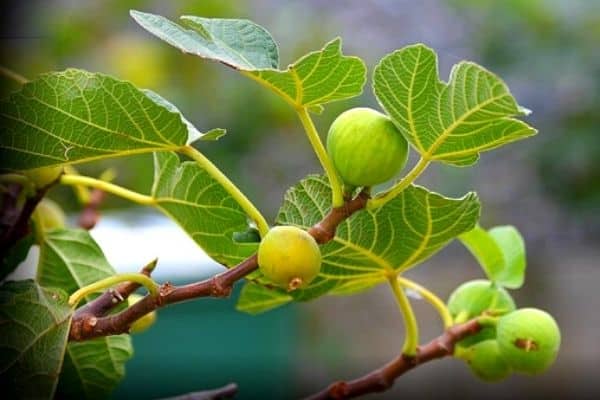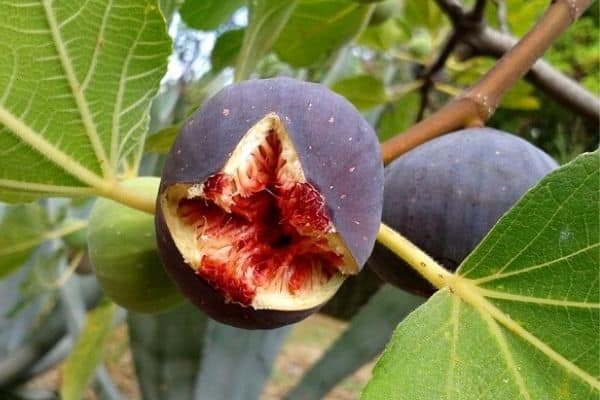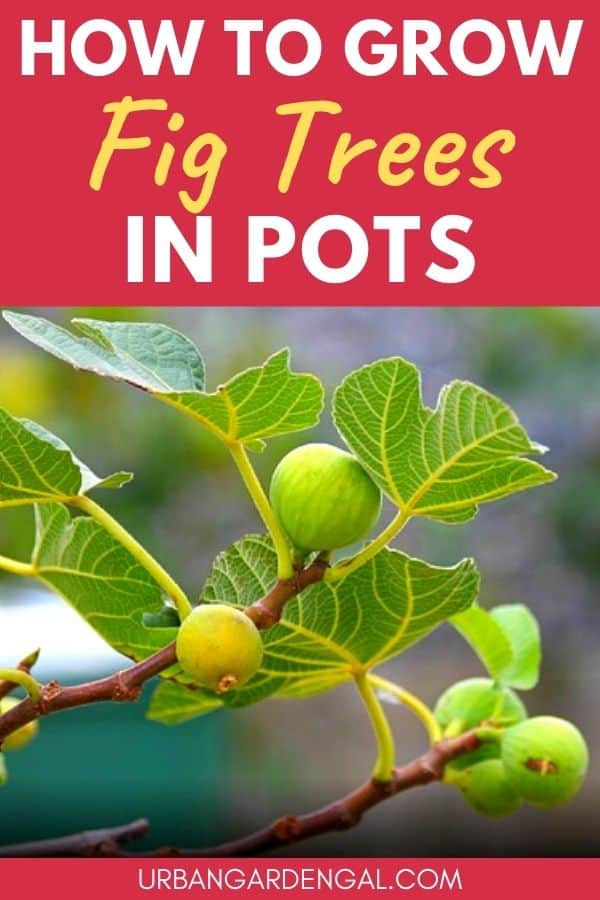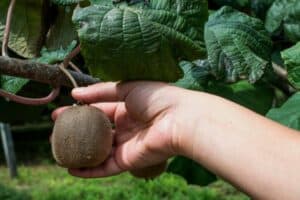Growing fig trees in pots is a great space saver for small gardens.
Container fig trees are ideal for courtyards, decks and small backyards and you can move them around to catch the sun or protect them from bad weather.
In this article you’ll learn how to grow delicious figs no matter how much garden space you have available.
This post contains affiliate links. Please read the disclosure for more info.

Advantages of potted fig trees
Growing fig trees in containers prevents their roots from spreading out too much, which results in a higher yield of fruit.
Container figs are also more compact in size than regular fig trees, which makes them perfect for small gardens.
How to grow figs in pots
The first step is to choose a large planter that is about twice the size of the pot it came in or if it’s a bare rooted plant, choose a container that is twice the size of the root ball.
This will allow the tree’s roots to spread out as it grows.
I recommend getting a plant stand with wheels which will allow you to move the tree around to get the best light.
You can also wheel the tree undercover to protect it from frost and bad weather.
Choose a healthy looking fig plant from your local nursery or you may be able to get your hands on a sucker from a friend’s tree.
Fig trees can be planted at any time of the year, but if you plant them in summer you’ll need to take care to ensure that they’re well watered.
Figs trees grow best in full sun, so place your planter somewhere that receives at least 6 to 8 hours of sunlight each day.
Morning sun is especially helpful for removing dew that can lead to fungal diseases.
It usually takes between 3 to 5 years for fig trees to begin producing fruit but it’s well worth the wait to have your own home-grown figs.

Fertilizer
Figs trees will need fertilizing as the fruit starts to develop on the tree.
Use a potassium based fertilizer like tomato fertilizer to help the tree produce an abundance of fruit.
Harvesting
Figs are usually ready to harvest in late summer.
Fig trees are very susceptible to damage from birds so it’s a good idea to cover the tree with netting to stop the birds eating the fruit before it’s ripe.
You can read about some other ways to stop birds eating your fruit before you harvest it in this article: How To Keep Birds Away From Fruit Trees
Figs should be left on the tree until they’re fully ripe because they don’t continue to ripen after they’re harvested.
You can tell that figs are ready to harvest when the fruit hangs down and the neck starts to wilt.
The figs should come away from the tree easily.
Always do a taste test before you start picking the fruit.

Pruning
After the plant has finished fruiting you can trim it back, especially if the middle of the tree is becoming crowded.
Pruning fig trees promotes more growth and increases the amount of figs you’ll get in the next season.
Repotting
Fig trees will need to be repotted every year or two as they become established but after about five years they should be right to stay in the same pot.
Overwintering potted figs
If you live in an area with mild winter temperatures you can leave your fig tree outdoors in a sunny, sheltered spot over the winter months.
In areas with cold winter temperatures, it’s best to move the tree undercover where it will be protected from frost and snow.
Fig trees overwintered indoors will need a well lit spot to stay healthy over the winter months.
How to eat figs
There are so many ways to enjoy beautiful ripe figs.
You can eat them fresh straight from the tree, add them to salads, stew them, dry them, make a fig preserve or drizzle them with yogurt and honey. Yum!
COMMON QUESTIONS
Are fig trees frost tolerant?
Established fig trees are fairly frost hardy, but the fruits are susceptible to frost damage. [1]
If there is a frost predicted when there fruit is on the tree you’ll need to cover the tree or move it indoors until the chance of frost has passed.
Why do figs split on the tree?
Almost ripe figs splitting on the tree is a common problem and it’s caused by high water levels within the plant.
To prevent figs splitting take care to ensure that you’re not overwatering the plant, especially in the evenings when there is less evaporation.

So there are my tips for caring for potted fig trees.
With the right container and a nice sunny spot, you can grow beautiful fresh figs at home, even if you have limited garden space.
RELATED ARTICLES
Have you tried growing figs in containers? Let me know in the comments below.
Are you on Pinterest? I have boards dedicated to Growing Fruit and Gardening Tips that you may enjoy. You can also find me on Facebook.





